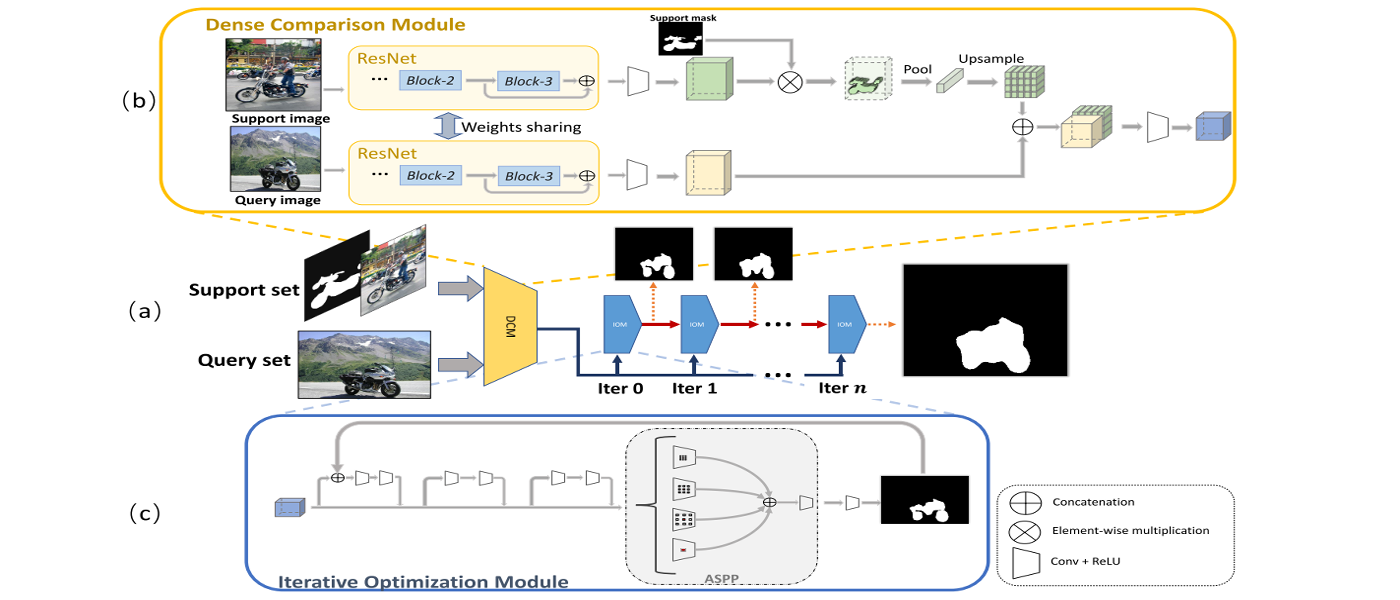CANet(CANet: Class-Agnostic Segmentation Networks with Iterative Refinement and Attentive Few-Shot Learning)[1] consists of a two-branch dense comparison module which performs
multi-level feature comparison, and an iterative optimization module which iterativelyrefines the predicted results. There are some details of reading and implementing it.
Contents
Paper & Code & note
Paper: CANet: Class-Agnostic Segmentation Networks with Iterative Refinement and Attentive Few-Shot Learning(CVPR 2019 paper)
Code: PyTorch
Note: Mendeley
Paper
Abstract
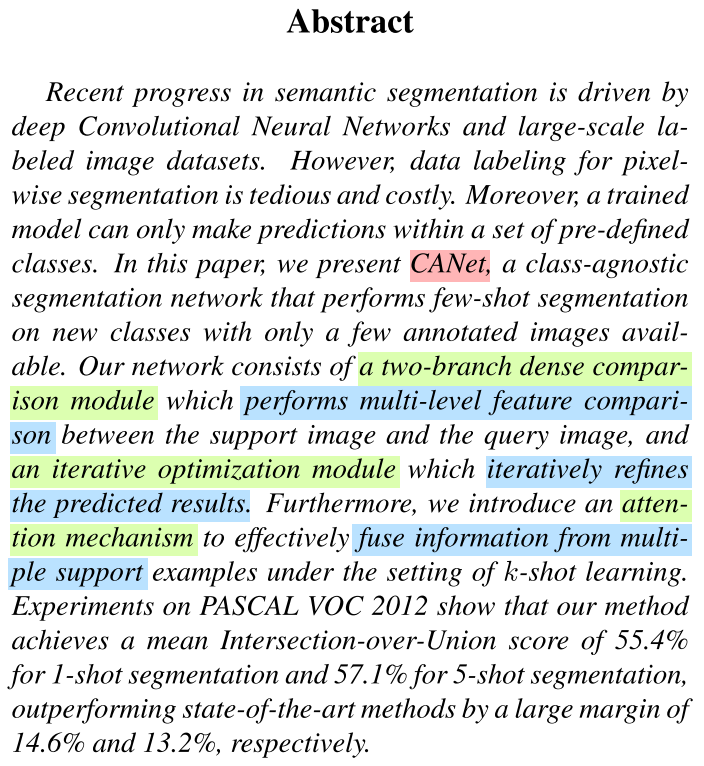
Problem Solution
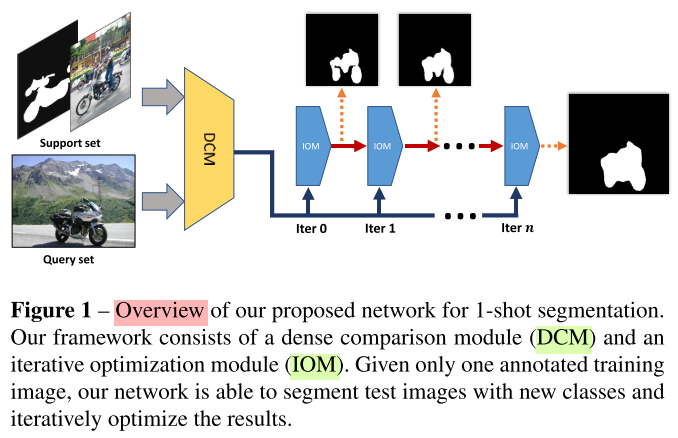
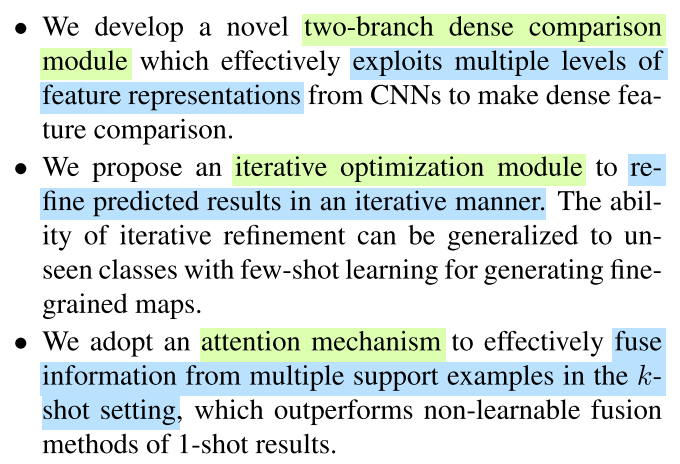
Conceptual Understanding
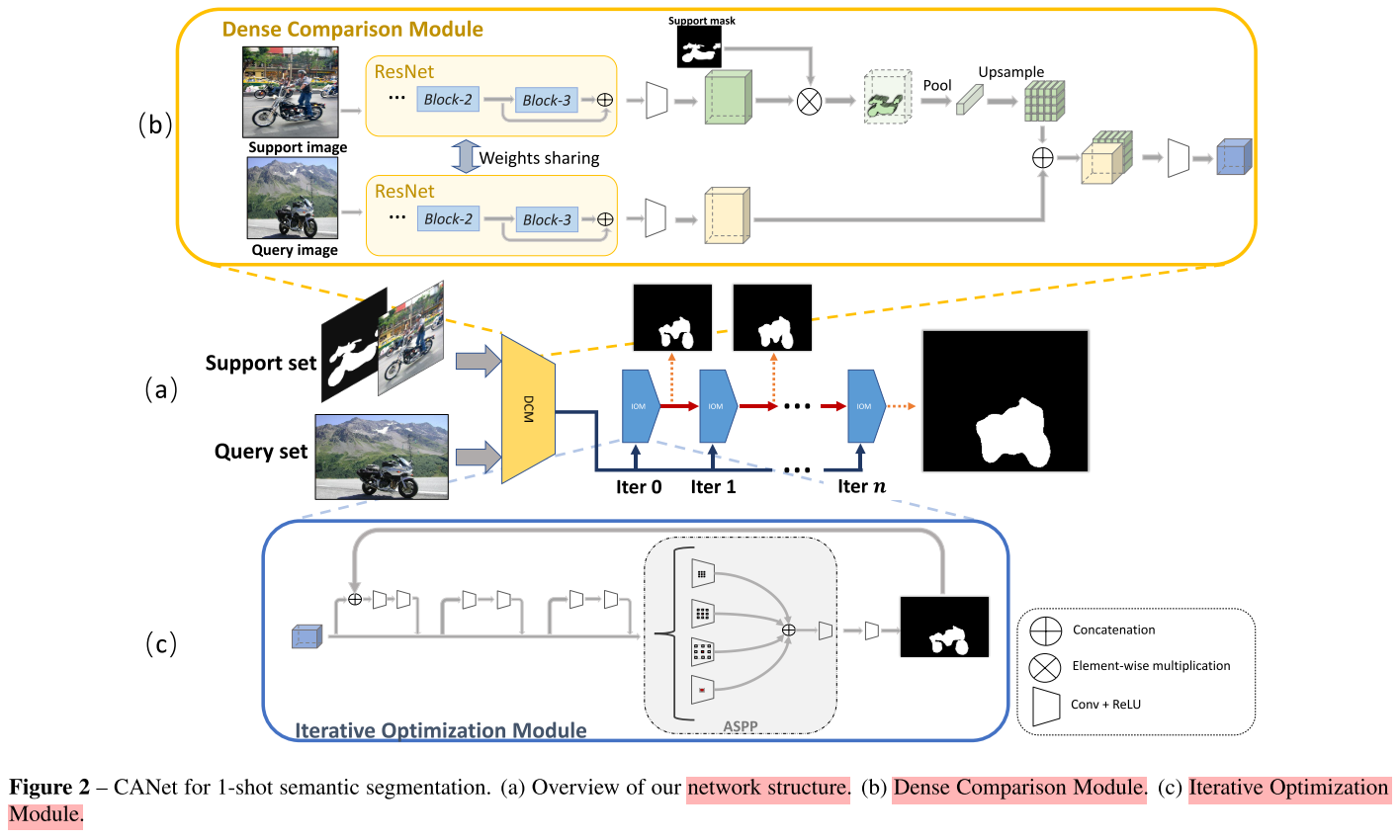
Dense Comparison Module(DCM)
- Feature Extractor: features in lower layers often relate to low-level cues, e.g.,
edges and colorswhile features in higher layers relate to object-level concepts such asobject categories. Instead, we focus on middle-level features that may constitute object parts shared byunseen classes. - Dense Comparison: Here, they use global average pooling over the foreground area to
squeeze the feature maps to a feature vector, global image features turn out to be useful in segmentation tasks. After obtained the global feature vector from the support set, theyconcatenate the vector with all spatial locationsin the feature map generated by the query branch.
Iterative Optimization Module(IOM)
They propose to incorporate the predicted masks in a residual form: $$M_t = x+F(x,y_{t-1})$$
They use Atrous Spatial Pyramid Pooling module (ASPP) proposed tocapture multi-scale information.
Core Conception
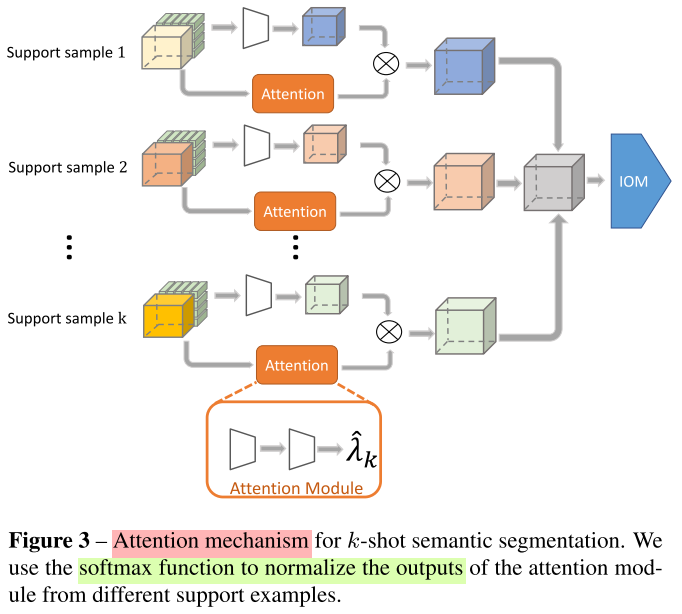
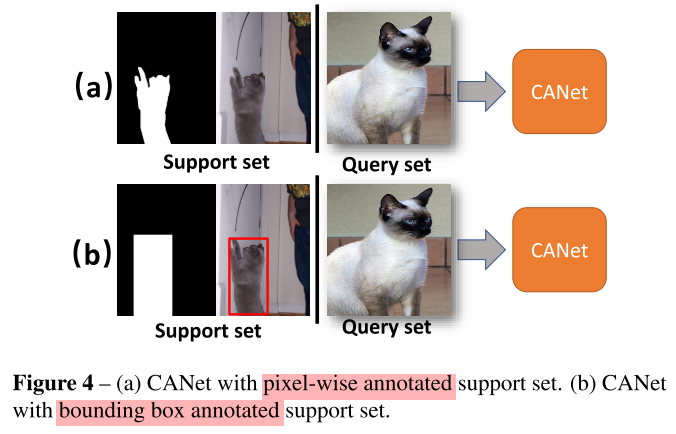
Experiments


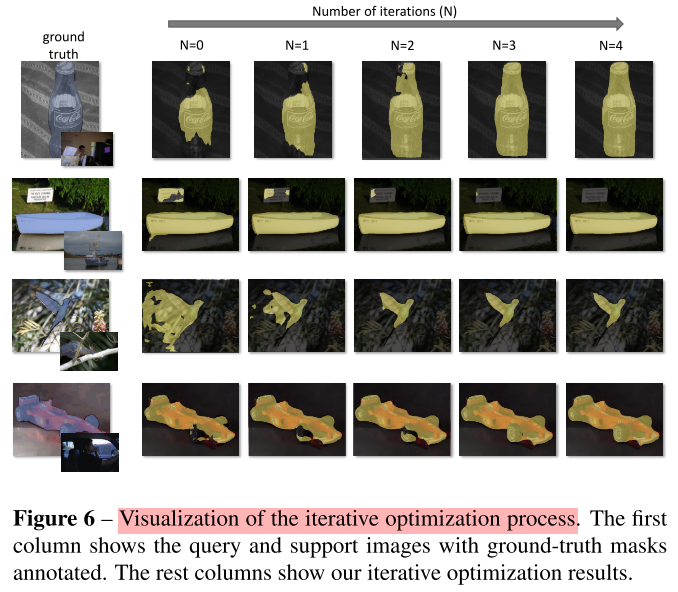


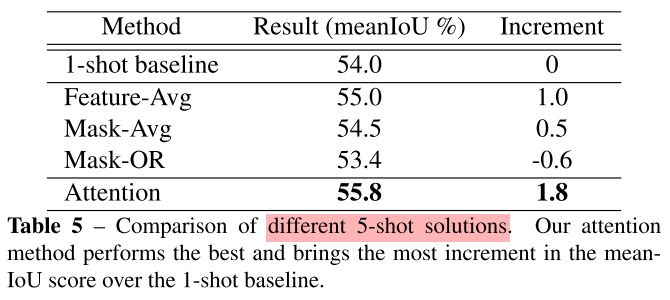
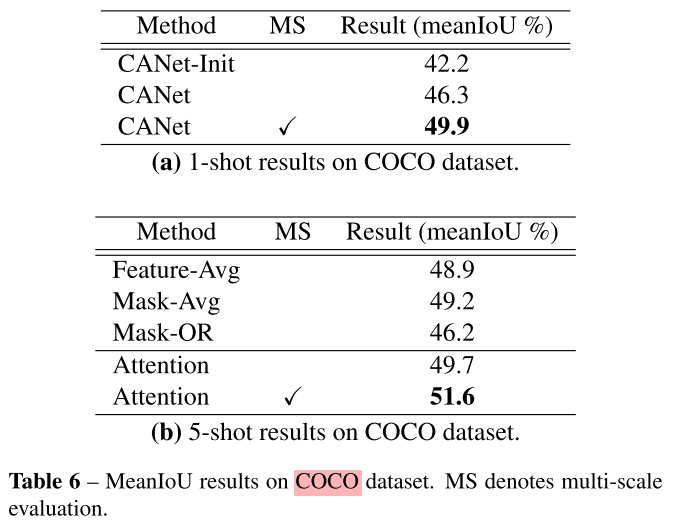
Code
[Updating]
Note
- Well described the latent details in feature map and its process.
References
[1] Zhang C, Lin G, Liu F, et al. Canet: Class-agnostic segmentation networks with iterative refinement and attentive few-shot learning[C]//Proceedings of the IEEE Conference on Computer Vision and Pattern Recognition. 2019: 5217-5226.
[2] CaNet. https://github.com/icoz69/CaNet.
